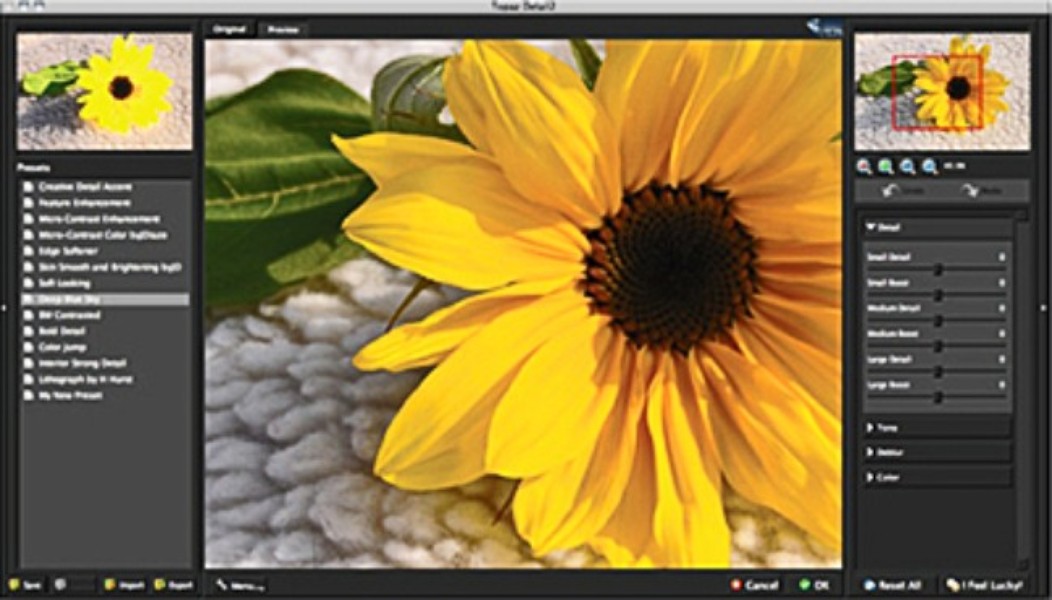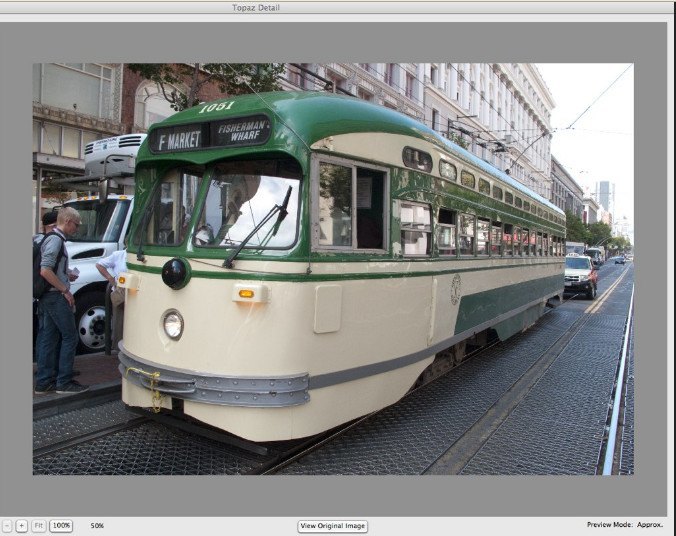
- #Topaz detail user manual full
- #Topaz detail user manual software
- #Topaz detail user manual iso
- #Topaz detail user manual professional
- #Topaz detail user manual download
It provides tools for creating unique images and focuses on the creative process rather than mass processing. Topaz Studio 2 is a standalone photo editor and an Adobe Photoshop and Lightroom plugin dedicated to creative post-processing. All Topaz Labs products are compatible with Adobe Photoshop and Lightroom, have a perpetual license, and can be bought separately or in bundles.
#Topaz detail user manual software
Topaz offers free trials that allow you to see how the software works on your computer and make an informed decision. Topaz Labs products are available for Windows and Mac. They offer smart and automatic adjustments but allow users to fine-tune each parameter to create a unique artistic vision.īefore deciding to use Topaz Labs products or look for Topaz alternatives, find out what this company has to offer and if their products suit your requirements and workflow. The newest versions of Topaz Labs plugins integrate artificial intelligence technologies and provide content-aware functionalities.
#Topaz detail user manual professional
Topaz Labs plugins are built for professional photographers, and high-quality images are their priority.

All provide advanced functionalities and deliver natural-looking results. Independence from Adobe products means a lower price, an easier learning curve, and a more straightforward workflow.Įach Topaz Labs plugin is designed and optimized for a specific purpose. Its first products were plugins for Adobe Photoshop and Lightroom, but now Topaz has its own standalone editor that works as a host for its plugins. Our photography tools, software included, are relatively inexpensive for what they allow us to do and problems they solve.Topaz Labs develops plugins and standalone software for professional photo editing. I photographed a broadcast studio last week and I was told a Fuji box lenses on one of the rigs goes for $178K! The entire rig, camera, lens, pedestal tripod and the cradle goes for almost $300K. Price while may be high for some and perception may be that the software companies are milking us for things we do not need, I think the right tool makes our lives a lot easier.
#Topaz detail user manual iso
I am forced to shoot a lot of high ISO images these days and the noise reduction function is invaluable. I think if the Denoise is better of the two (Topaz/On1) I would pay for the software just for that. My friend uses the Gigapixel and loves it. From the few comparisons that I have seen, they both have pluses and minuses. I would love to see do a comparison with On1 denoise. I am mostly interested in the DeNoise AI module.
#Topaz detail user manual full
You would also prefer adobe offering the whole CC and ditch single apps? So if you do something with graphics you need ps, lr, illustrator, express, inDesign, animate, substance etc ah and we're at it maybe the video centric apps as well despite one just wanting lr/ps? Or maybe offering only the whole CC suite at full price? That is more comparable.
#Topaz detail user manual download
As example if you don't need gigapixel ai (it really isn't that great with full sized photos but pretty good if you download small resolution photos from web and get them into print size). With the single one you also have the opportunity to stay cheaper by leaving out what you don't need. Meaning you are happy paying the same price for less capabilities? (ok atm it is cheaper, we'll see if it stays at a discount like the single apps or goes up). Well the combined app costs as much as all three together, so price wise nothing changed except that you get more with the single apps as they offer more options, more AI models and more control. To be honest it was much more refined before the refinement in the presentation.ĪI Clear for denoise seems to be gone? It wasn't the best but more consistent for batch processing as a last refinement for delivery or clearing spots or lines (you know those artifacts that might appear as leftovers of NR when dealing with heavy noise).

You can grow it to cover missed spots sure but it starts growing those that were already pretty good to cause effects on the background without an option to limit that. Now you have to manually blend it in a different program. Or a recover original detail slider which acted as a soft blend mode to get something in between which was useful against some ai errors as well. You had more choices and could make some tweaks as there always were parts which looked "funny" in some images (masking out with a brush in worst case situations but you could do it).

Oww the control is pretty limited compared to the standalone apps.


 0 kommentar(er)
0 kommentar(er)
